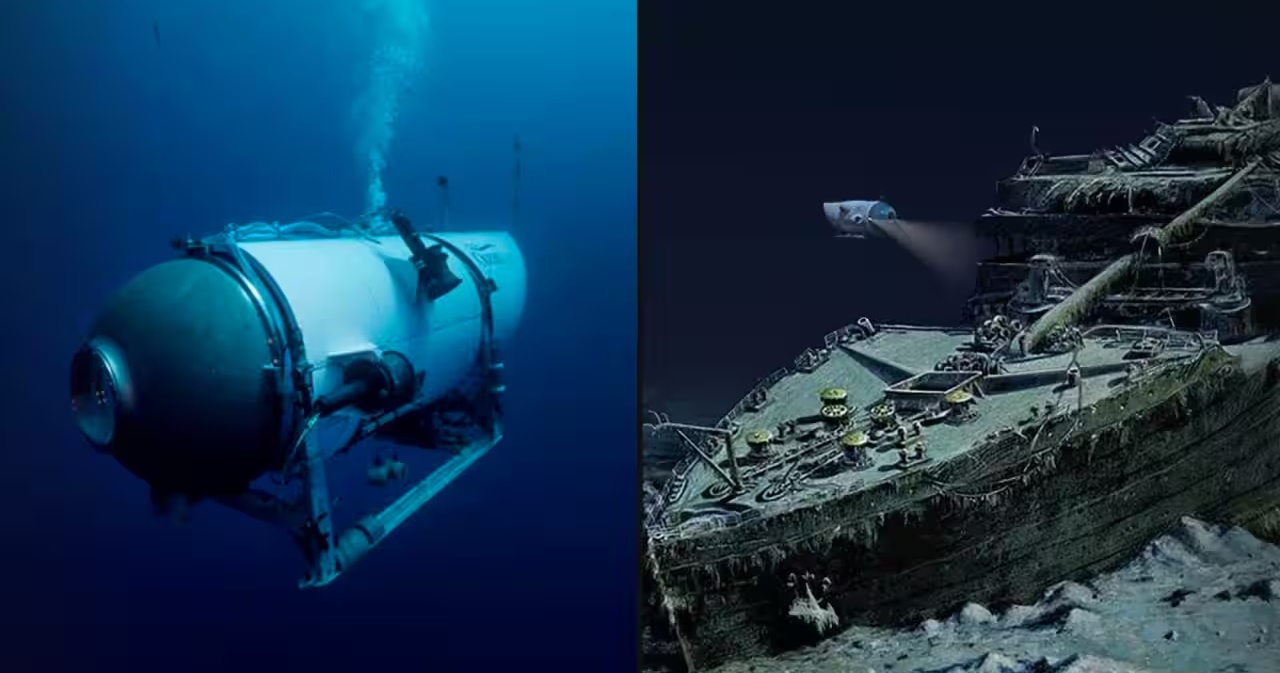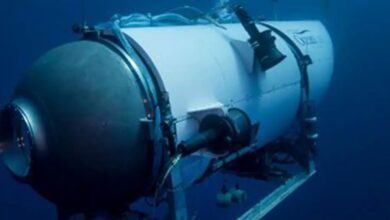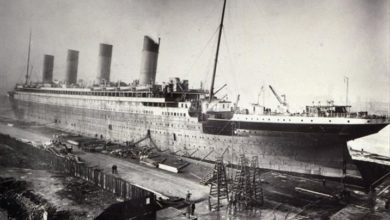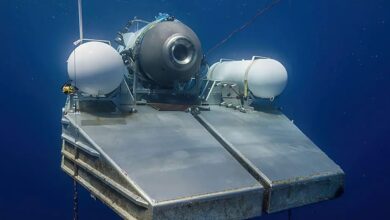Lost submarine: Coast Guard registers possible sign of life
Knocking sounds have been heard during the search for the missing submersible in the North Atlantic. As the "New York Times" reports, there have long been doubts about the safety of the submarine.

When searching for the missing submersible “Titan” in the Atlantic, emergency services may have heard a sign of life from the occupants. On Tuesday, search teams used sonar to detect a kind of knocking noise every 30 minutes in the region where the submersible is suspected, the US Coast Guard reported on Twitter.
Four hours later, after additional sonars were deployed, the knocking could still be heard, it said. According to the memo, however, it was unclear exactly when and for how long the noises could be heard.
The submersible, operated by the company OceanGate Expeditions, set off on a tourist dive trip to the wreck of the sunken Titanic on Sunday. After almost two hours, contact with the escort ship was lost, since then there has been no trace of the submarine and the five occupants.
More ships support rescue operation
The contingent of rescue workers has now been further strengthened. Eight more ships are on their way to support the search in the Atlantic. These included four Canadian Coast Guard ships, the French research vessel L’Atalante and the Canadian HMCS Glace Bay, which has a decompression chamber and medical staff on board, the US Coast Guard said.
Time is pressing: According to estimates by the authorities, the oxygen on board the “Titan” should only last until Thursday noon. The US Coast Guard said on Twitter that an area of around 26,000 square kilometers had already been searched. That’s bigger than Mecklenburg-Western Pomerania.
The search is extremely complex, said Captain Jamie Frederick of the US Coast Guard in Boston. “It’s difficult to get ships there quickly. And we’re looking at the surface and under the surface – that’s what makes it so difficult.” It would also be difficult to salvage the approximately 7 meter long diving capsule in the deep sea, if it could be located there at all. The US Navy has meanwhile sent a deep-sea recovery system to St. John.
Lost Submarine: Not good news – but not bad either
OceanGate again pledged to make every effort to rescue the five missing. “All possible steps are being taken to bring the five crew members back safely,” it said in a statement. We are “deeply grateful for the urgent and comprehensive support we are receiving from multiple government agencies and deepwater companies.”
One of the missing passengers on board is British adventurer and entrepreneur Hamish Harding. Harding’s friend, former astronaut Terry Virts, is optimistic on CNN: “The good news is that we don’t have any bad news so far. We haven’t found any parts and we haven’t heard an underwater explosion in the sonar, so it may well be that they are on waiting for rescue.”
Concerns about the safety of the “Titan”
According to an article in the New York Times, executives in the submersible industry had expressed concerns about Titan’s safety years ago. “We are concerned that OceanGate’s current experimental approach could lead to negative results (ranging from minor to catastrophic),” they wrote in a letter dated 2018 published by the newspaper.
In it, OceanGate is accused of misleading marketing. Chief Stockton Rush, who is also among the missing as the captain of the submersible, was called upon to have the “Titan” tested by an independent party. That fits the impression of reporter David Pogue from the US broadcaster CBS, who took part in the trip last year. He told the BBC the vehicle seemed improvised to him. “You control this submarine with an Xbox game controller,” Pogue said.
Meanwhile, it was revealed that OceanGate Expeditions had been warned in 2018 of potentially catastrophic safety failures on the experimental submersible. This is evident from court documents. OceanGate’s director of marine operations, David Lochridge, warned that the company’s testing and certification process was inadequate and “exposed passengers on an experimental submersible to potentially extreme dangers.
OceanGate then emphasized that Lochridge was not an engineer and was not hired or asked to do any engineering work on the Titan. After voicing his concerns, Lochridge was fired. He had worked for OceanGate since 2015, first as an independent contractor and then as a director of marine operations.




